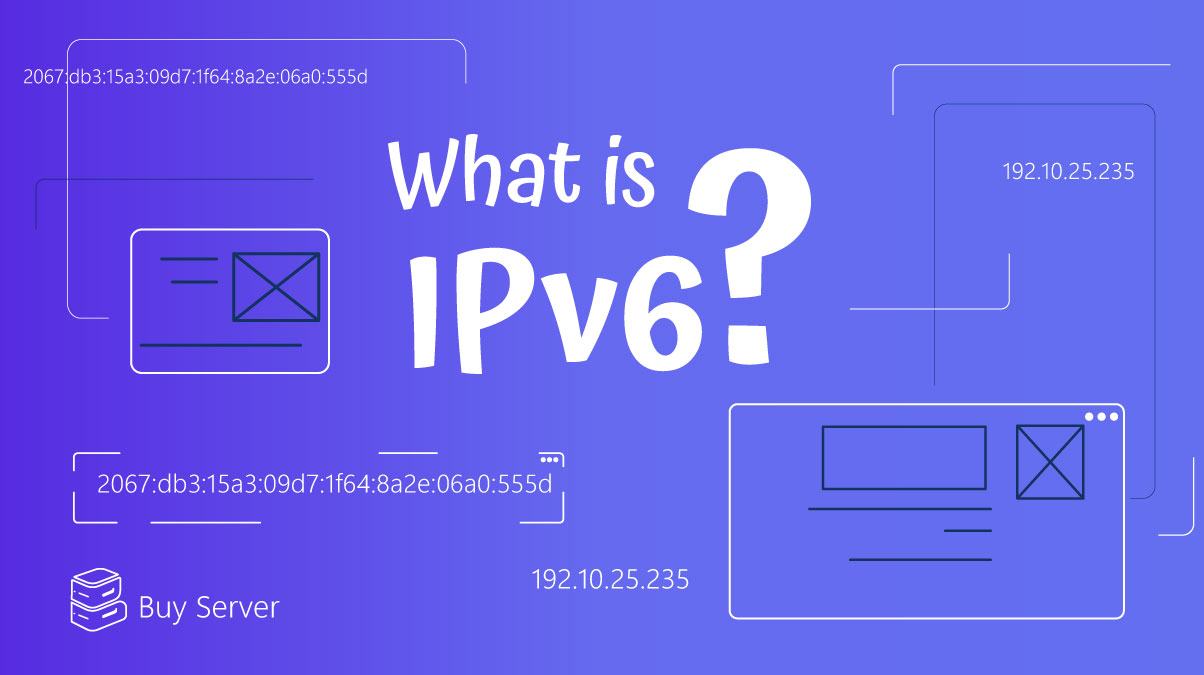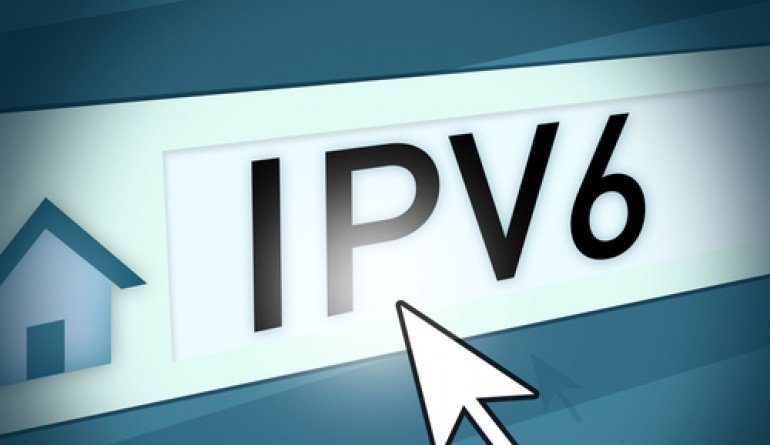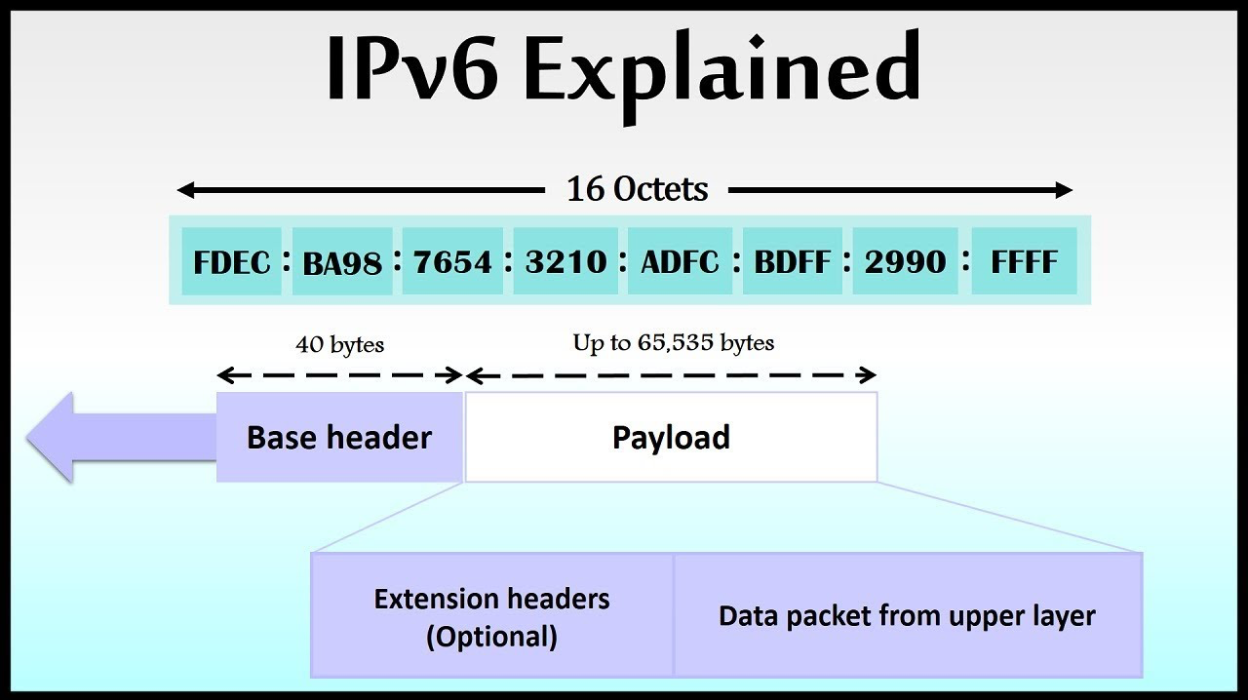In the ever-evolving landscape of internet technologies, “IPv6” stands out as a term that’s been buzzing louder than most. You might wonder, what is IPv6?
At its core, IPv6, or Internet Protocol version 6, is the next-generation successor to IPv4, which has been the backbone of the internet for many years.
As we navigate deeper into the digital era, with a surge in devices connecting online, there arose a pressing need for a more robust and expansive addressing system.
This is where IPv6 shines, offering enhanced features that promise a scalable, secure, and future-ready internet. Intrigued? Keep reading to uncover the transformative potential of Internet Protocol version 6 and why it’s pivotal for our digital future.
What is IPv6?
IPv6, or Internet Protocol version 6, is the most recent version of the Internet Protocol (IP) used to identify and locate devices on a network.
It was developed as the successor to IPv4 (Internet Protocol version 4) due to the increasing depletion of available IPv4 addresses. IPv6 was designed to address the limitations of IPv4, primarily its limited address space.
While IPv6 adoption has been growing, IPv4 is still widely used, and many networks and devices continue to rely on it.
However, as IPv4 addresses become scarcer and the internet continues to expand, the transition to IPv6 is becoming increasingly important to ensure the continued growth and functionality of the global network.
If you want to buy VPS, click on the link
Advantages and disadvantages of IP address version 6
In the previous section, you learned what IPv6 is, and in this section we are going to introduce you to its advantages and disadvantages.
IPv6 offers several advantages over its predecessor, IPv4, but it also comes with its own set of challenges and disadvantages. Here’s a summary of the advantages and disadvantages of version 6 IP addresses:
Advantages of IPv6
Expanded Address Space
The most significant advantage of internet protocol version 6 is its vastly expanded address space. With 128-bit IPv6 addresses, it can accommodate an almost unlimited number of devices, ensuring there are enough addresses for all future internet-connected devices.
Improved Performance
IPv6 network has a simplified header structure compared to IPv4, which reduces the processing overhead on routers and other networking equipment. This results in improved network performance and efficiency.
Enhanced Security
IPv6 includes IPsec as an integral part of its protocol suite, providing built-in security features for authentication and encryption. This helps secure data transmission over the internet.
Autoconfiguration
IPv6 internet supports stateless address autoconfiguration, allowing devices to automatically obtain IP addresses and network configuration settings, simplifying network setup and management.
Simplified Routing
Internet protocol verion 6 simplifies routing tables by reducing the number of routes due to its hierarchical addressing structure. This can lead to more efficient and scalable routing on the internet.
Support for Emerging Technologies
IPv6 is designed to support emerging technologies and applications, such as the Internet of Things (IoT) and 5G networks, which require a large number of unique IP addresses.
Disadvantages of IPv6
Compatibility Issues
IPv6 is not backward-compatible with IPv4, which means that networks and devices need to be upgraded or support transition mechanisms like Dual-Stack or tunneling for interoperability. This transition can be complex and costly.
Limited Adoption
While IPv6 adoption has been growing, many networks, services, and devices still primarily use IPv4. This can lead to compatibility issues and require the use of translation mechanisms.
Lack of Incentives
In some cases, there may be limited incentives for organizations to adopt IPv6, especially if they have sufficient IPv4 addresses for their current needs. This can slow down the transition to IPv6.
Security Concerns
While Internet Protocol version 6 includes enhanced security features, the adoption of these features is not uniform across all implementations. Some networks may not fully utilize IPv6’s security capabilities, potentially leaving vulnerabilities.
Management Complexity
IPv6 introduces new complexities in network management, especially during the transition phase when both IPv4 and IPv6 coexist. Managing and securing dual-stack networks can be challenging.
Learning Curve
IT professionals and network administrators may need to acquire new skills and knowledge to effectively implement and manage IPv6 networks, adding to the learning curve. Click on the link to learn how to use VPS.
How IPv6 works?
As we answered the question of what is ipv6; Internet Protocol version 6 works by providing a new set of rules and addressing mechanisms for identifying and routing data packets across computer networks.
It is designed to replace the older IPv4 (Internet Protocol version 4) and improve upon its limitations, primarily the depletion of IPv4 addresses. Here’s how Internet Protocol version 6 works:
- Addressing
-
- 128-Bit Addresses
IPv6 uses 128-bit addresses, which are much longer than the 32-bit addresses used by IPv4. These long addresses are written in hexadecimal notation and are typically separated by colons (e.g., 2001:0db8:85a3:0000:0000:8a2e:0370:7334).
-
- Hierarchical Structure
IPv6 addresses have a hierarchical structure, with different parts serving specific purposes. For example, the first 64 bits are often used for network prefixes, while the remaining 64 bits can be used for device identifiers or subnets.
-
- (Double Colon)
IPv6 allows the use of the double colon (::) notation to represent sequences of consecutive zeros in an address. This helps reduce the length of the 6th version of internet protocol addresses when there are multiple consecutive zeros.
- Packet Header
-
- Simplified Header
IPv6 packet headers are simpler than those of IPv4. This simplification reduces processing overhead on routers and network devices, making packet forwarding more efficient.
-
- Extension Headers
IPv6 includes extension headers that can be used for various purposes, such as fragmentation, authentication, encryption (through IPsec), and routing.
- Routing
-
- Routing Tables
IPv6 routers maintain routing tables that determine how to forward packets to their destination. The hierarchical structure of Version 6 of IP addresses simplifies routing decisions.
-
- Neighbor Discovery
IPv6 includes a Neighbor Discovery Protocol, which is used to discover and maintain the link-layer addresses (e.g., MAC addresses) of devices on the same network segment. This is essential for local communication.
- Autoconfiguration
-
- Stateless Address Autoconfiguration (SLAAC)
IPv6 supports stateless address autoconfiguration, allowing devices to automatically obtain IPv6 addresses and other network configuration information. This reduces the need for manual configuration or DHCP servers in many cases.
- Security
-
- IPsec
IPv6 includes IPsec as an integral part of the protocol suite, providing built-in security features for authentication, encryption, and data integrity. IPsec can be used to secure communication between devices.
- Transition Mechanisms
-
- Dual-Stack
During the transition from IPv4 to IPv6, many networks operate in a dual-stack mode, where both IPv4 and IPv6 are supported. This allows devices and applications to work with both protocols.
-
- Tunneling
Tunneling mechanisms encapsulate IPv6 packets within IPv4 packets for transmission over IPv4 networks. This enables communication between IPv6-enabled devices and IPv4-only devices.
- Multicast and Anycast
-
- IPv6 provides enhanced support for multicast communication, allowing efficient one-to-many communication.
- Anycast is a routing technique that enables multiple devices to share the same IPv6 address, routing traffic to the nearest one.
In summary, IPv6 works by providing an extended and simplified addressing scheme, efficient packet header structure, improved routing mechanisms, enhanced security, and support for autoconfiguration. It is designed to meet the addressing and communication needs of a modern, interconnected world with a vast number of devices and networks. Version 6 of IP addresses aims to ensure the continued growth and functionality of the internet while addressing the limitations of IPv4.
Differences between IPv4 and IPv6
IPv6 network offers several advantages over IPv4, including a larger address space, improved security, and enhanced features.
As the number of devices connected to the internet continues to grow, the transition to Internet protocol version 6 becomes increasingly essential to accommodate the expanding demand for IP addresses.
Here’s a detailed comparison of the differences between IPv4 and IPv6 based on the information from the sources:
| Feature/Aspect | IPv4 | IPv6 |
| Address Length and Format | Uses a 32-bit address length, represented in decimal format separated by dots (e.g., 189.123.123.90). | Uses a 128-bit address length, represented in hexadecimal format separated by colons (e.g., 2001:0000:3238:DFE1:0063:0000:0000:FEFB) |
| Address Configuration | Supports manual and DHCP address configuration. | Supports auto and renumbering address configuration. |
| Connection Integrity | End-to-end connection integrity is unachievable. | Achieves end-to-end connection integrity. |
| Address Space | Can generate 4.29×10^9 address space. | Has a significantly larger address space, producing 3.4×10^38 address space. |
| Security | Security is dependent on the application. | IPSEC is an inbuilt security feature. |
| Address Representation | Address representation is in decimal. | Address representation is in hexadecimal. |
| Fragmentation | Fragmentation is performed by both the sender and forwarding routers. | Fragmentation is performed only by the sender. |
| Packet Flow Identification | Packet flow identification is not available. | Packet flow identification is available and uses the flow label field in the header. |
| Checksum Field | Contains a checksum field. | Does not have a checksum field. |
| Message Transmission Scheme | Uses a broadcast message transmission scheme. | Uses multicast and anycast message transmission schemes. |
| Encryption and Authentication | Does not provide encryption and authentication. | Provides both encryption and authentication. |
| Header Size | Has a header size ranging from 20-60 bytes. | Has a fixed header size of 40 bytes. |
| Address Classes | IP addresses are divided into five classes (Class A to E). | Does not have any classes of IP addresses. |
| VLSM (Variable Length Subnet Mask) | Supports VLSM. | Does not support VLSM. |
| Addressing Method | Uses a numeric address with binary bits separated by a dot. | Uses an alphanumeric address with binary bits separated by a colon and contains hexadecimal. |
| Address Types | Uses unicast, broadcast, and multicast address types. | Uses unicast, multicast, and anycast address types. |
| Configuration | IP addresses and routes must be assigned either manually or with DHCP. | Supports autoconfiguration. |
| IP to MAC resolution | Uses ARP (Address Resolution Protocol) to map to MAC address. | Uses NDP (Neighbour Discovery Protocol) to map to MAC address. |
| Quality of Service (QoS) | QoS allows requesting packet priority and bandwidth for TCP/IP applications. | The IBM i implementation of QoS does not currently support IPv6. |
Conclusion
IPv6, or Internet Protocol version 6, represents the next generation of internet protocols, designed to address the limitations and shortcomings of its predecessor, IPv4.
With its 128-bit address space, it offers a virtually inexhaustible number of IP addresses, ensuring the continued growth and scalability of the internet.
Beyond just addressing, Internet protocol version 6 incorporates enhanced security features, improved routing, and support for emerging technologies.
As the digital landscape evolves and the number of connected devices multiplies, Internet Protocol version 6 stands as a testament to forward-thinking and the commitment to a more interconnected and efficient global network.






